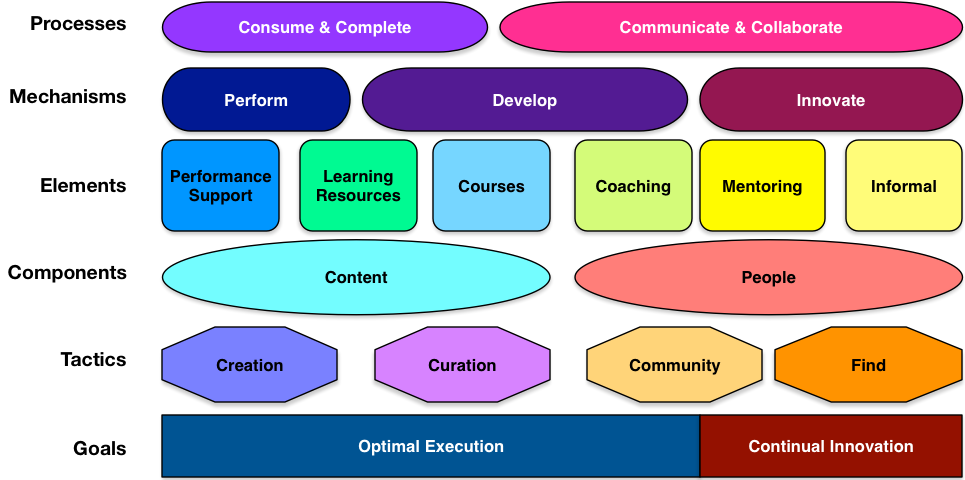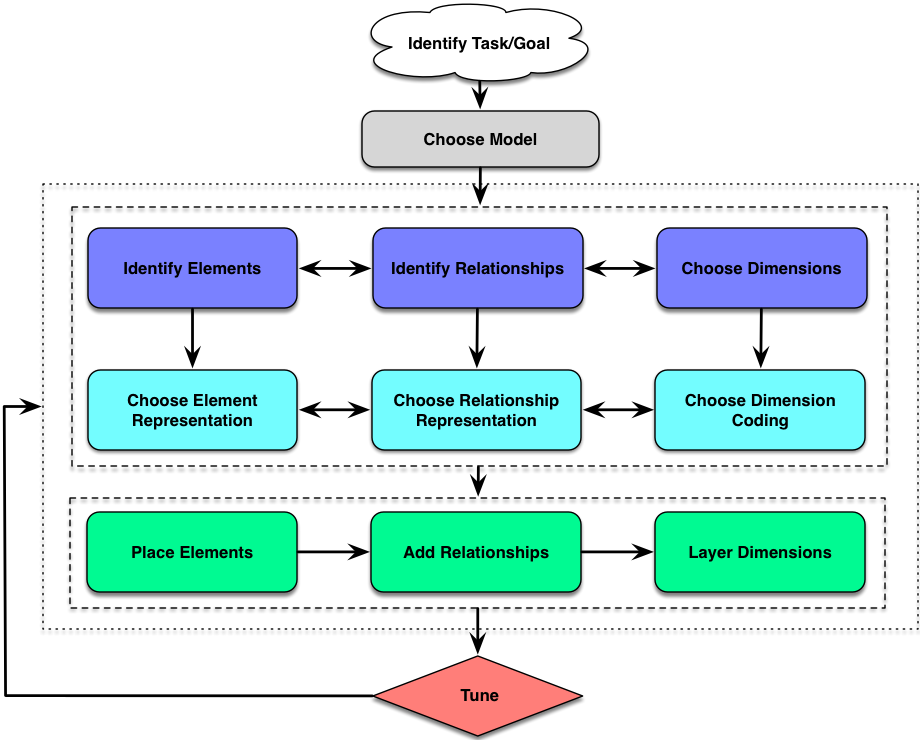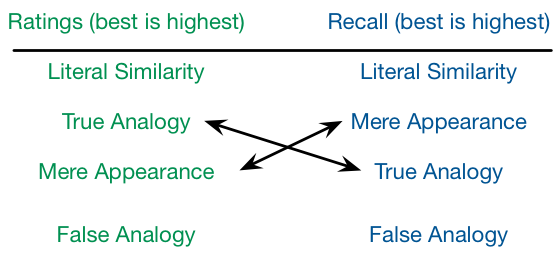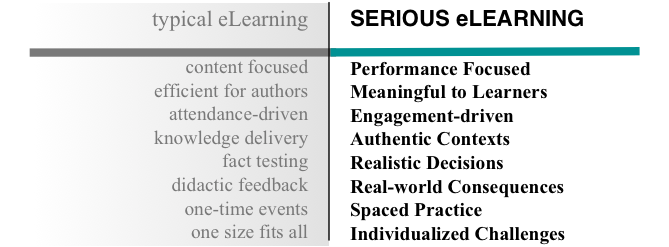One of the keys to the L&D revolution is recognizing the full performance ecosystem and the ways technology can support performance and development. I’ve tried to represent and share my thinking via diagrams (including here, here, and here). Prompted by a recent conversation, it was time to revisit the representation.
 Here, I’m layering on several different ways to think about the goals, elements, etc. (Given that this is an initial version, I’m kind of haphazard about labels like mechanisms, components, etc.) To start, as I continually argue, at the bottom it’s about coupling optimal execution with continual innovation. We need to do well those things we know we need to do, and then we need to continually improve. I think that more and more of the optimal execution is getting automated.
Here, I’m layering on several different ways to think about the goals, elements, etc. (Given that this is an initial version, I’m kind of haphazard about labels like mechanisms, components, etc.) To start, as I continually argue, at the bottom it’s about coupling optimal execution with continual innovation. We need to do well those things we know we need to do, and then we need to continually improve. I think that more and more of the optimal execution is getting automated.
On top of that, we have components – content and people – and the tactics to leverage them. We create or curate content (curation over creation!), and we develop relationships through community or find appropriate expertise through recommendations or search. The goal is to have the right content and the right people ‘to hand’ to work with.
We develop content elements like performance support to support performing in the moment, and learning resources for self-directed learning over time. We also use courses, whether individual or collaborative, to develop people (particularly when they’re novices). I’d put courses to the left and performance support to the right (above content) if we were talking about developing people (as I have here). So, for novices we first use courses, then practitioners need resources and coaching, and experts need interaction. However, performance support is on one side on a continuum of mechanisms from performing, to developing, to innovation. That’s what I’ve captured here.
Similarly, we use social elements like coaching, mentoring, and informal learning to develop ourselves and our organizations over time. We use processes like consuming and completing to execute. Then we develop our ability to execute and the continue to learn through communicating and collaborating.
There are lots of ways to represent the ecosystem, and given that elaboration theory tells us multiple representations help, here’s another stab. There are lots of elements to consider and fine tune, but I like to share my thinking to help it develop! Overall, however, the opportunity is the chance to be contributing to organizational success in systematic and valuable ways. And that, I’ll suggest, is valuable. I welcome your thoughts.




